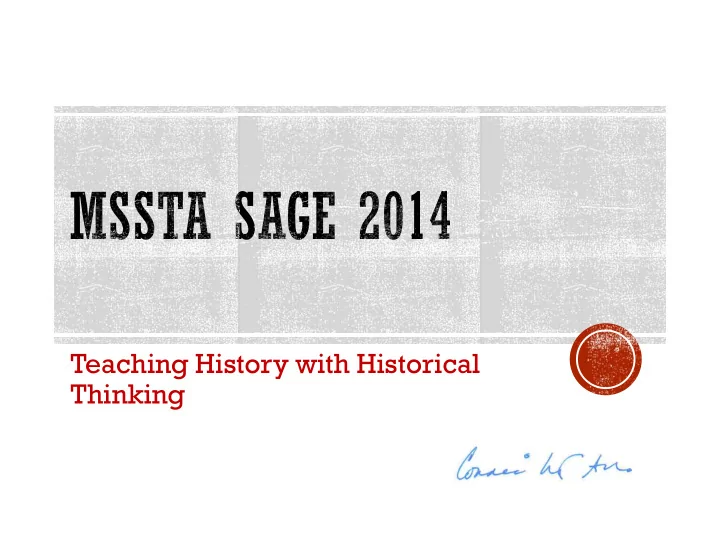

Teaching History with Historical Thinking
Teaching history has evolved over time and thus has shaped the pedagogical practices underlying the history curriculum. In Manitoba, as elsewhere in Canada, three broad stages can be identified in the development of history education: From the 1890s to the 1960s, history education emphasized nation- • building and shaping national identity. • From the 1960s and continuing into the present, history was seen as a means of understanding and addressing the problems of the present. Beginning in the 1990s, history education was directed towards • teaching students to think historically and helping students understand the how as well as the what of history. Teaching History
The past shapes who we are. An exploration of Canadian and world history enables students to acquire knowledge and appreciation of the past, to understand the present, and to live with regard for the future. An important aspect of this process is the disciplined investigation and interpretation of history. Students learn to think historically as they explore people, events, ideas, and evidence of the past. As they reflect upon diverse perspectives, personal narratives, parallel accounts, and oral and social histories, students develop the historical understanding that provides a foundation for active democratic citizenship.”
Historical thinking actively engages students in the process of inquiry. Through historical thinking, students are encouraged to think deeply and critically about the subject matter of history and its implications, acquire a sound understanding of the discipline, and become more engaged in “doing” history.
Historical thinking is a discipline- specific way of thinking.
To think historically, students need to be able to: Establish historical significance Use primary source evidence Identify continuity and change Analyze cause and consequence Researchers have identified various Take historical perspectives , and structural concepts that Understand the ethical dimension of provide the basis historical interpretations. of historical thinking.
Why do we care, today, • about certain events, trends, and issues in history? Why is Upper Fort • Garry significant to Canadian history? Establish Historical Significance
How do we find, • select, contextualize, and interpret sources for a historical argument? What can we learn • about the Metis role in the fur trade by studying HBCo records? Use Primary Source Evidence
What has changed and • what has remained the same over time? What has changed and • what has remained the same about how we view Louis Riel’s place in Canadian history? Identify Continuity and Change
How and why do • certain conditions and actions lead to others? What were the causes • of the Red River Resistance? Analyze Cause & Consequence
Understand that the “past • as a foreign country,” with its different social, cultural, intellectual, and even emotional contexts that shaped people’s lives and actions. Why would the Canadian • government send troops to Red River in 1870? Take a Historical Perspective
How do we, in the • present, judge actors in different circumstances in the past? How are we today to • assess (or redress) the use of Metis scrip on the prairies after 1870? Consider Ethical Dimensions
Recommend
More recommend